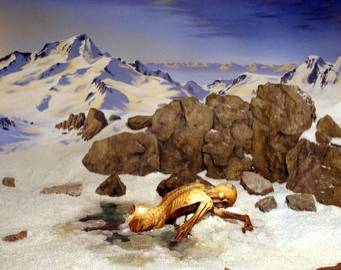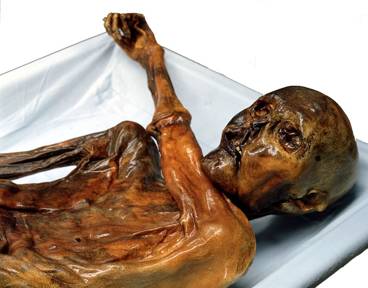
On September 19, 1991 two German hikers discovered a frozen body at the edge of a glacier high in the Alps, near the Italian-Austrian border. The mummy was in an amazing state of preservation due to the exceptional glacial conditions and quickly became an international scientific celebrity. Nicknamed Ötzi because he was discovered in the Ötztaler Alps, over 10,000 feet above sea level, the Ice Man was subjected to every scientific test imaginable. Using the radiocarbon dating method Ötzi’s age was placed between 5,348-5,298 years, at the end of the European Neolithic.
Some people were skeptical about Ötzi’s authenticity, however, suspecting that he might be the vehicle of an elaborate hoax and that his body could have been shipped in from South America, where many ancient mummified bodies have been discovered. To address this question of authenticity mitochondrial DNA was extracted from Ötzi’s remains and his sequence was found to differ from the Cambridge Reference only at positions 16224 and 16311, placing him unequivocally in haplogroup K, an indigenous European lineage. Haplogroup K originated some 15,000 years ago in northern Italy not far from where Ötzi was found.
File written by Adobe Photoshop® 5.0Subsequent to dating and authenticating Ötzi’s remains forensic anthropologists probed a number of other aspects of his life and death. Trace minerals, for instance revealed that he had grown up only a short distance from where he died, and a projectile point lodged in his shoulder blade proved that he had died a violent death.